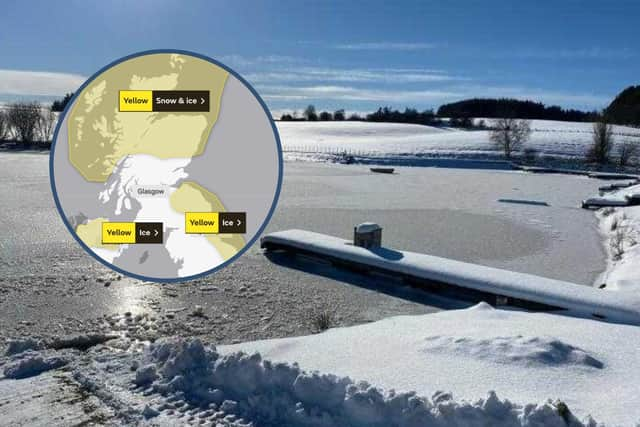Edinburgh weather: Met Office issues another yellow weather warning as icy conditions continue
and live on Freeview channel 276
Today, the Met Office has warned that icy conditions will continue in East Lothian and Midlothian in the coming days. The alert will come into effect at 6pm on Thursday, December 8 and will last until 12pm on Friday, December 9.
Another warning was issued on Tuesday, alerting locals that icy conditions could cause disruption in the same areas from 6pm today until 12pm on Thursday.
Advertisement
Hide AdAdvertisement
Hide AdThe weather forecaster has told locals to expect icy patches on some untreated roads, pavements and cycle paths. The Met Office also warned that injuries could be caused by slips and falls on icy surfaces.


It will stay cold in the Capital for the rest of the week, with temperatures expected to drop below zero every night. However, it is set to be dry and sunny over the coming days.
Met Office Deputy Chief Meteorologist, Jason Kelly, said: “Through the weekend and into next week cold weather will continue, with an ongoing chance of wintry showers, mainly for coasts, and freezing fog patches inland.
“An area of low pressure may then threaten southern and southwestern parts of the UK through mid-week. Confidence in the exact track of this system is low, but should it push precipitation into the UK, then this would readily turn to snow, with a lower chance of freezing rain. How far north the milder air gets is also open to a lot of uncertainty, but for now, many central and northern areas are likely to remain in the Arctic airmass.”